Jenolan Caves is one of the great natural spectacles in Australia, claimed to be the most ancient open caves in the world with arguably the most beautiful limestone formations. Scientists have dated the clay in the caves at 340 million years old.
The scenic river system at Jenolan Caves. Photo: Destination NSW
Tucked into a remote valley in the southern Blue Mountains National Park, this labyrinth of stalactite-lined chasms carved by pure underground rivers is a must-do extension of any visit to the Blue Mountains (which will be the subject of a separate feature.) The caves form part of the UNESCO World Heritage-listed Greater Blue Mountains area.
Small group tour of the caves. Photo: Destination NSW
Jenolan is Australia's largest cave system that is open to the public and guided tours let you explore this mysterious underworld. However, pre-booking is absolutely essential and, owing to perpetual roadworks, you must arrive at least one hour before your first booked activity.
Signage to the cave systems. Photo: Destination NSW
Guided tours of the show caves – Temple of Baal, Lucas, Chifley, Imperial-Diamond, Plughole and Orient – are available on weekends and selected weekdays. Private tours can sometimes be arranged if you book ahead and give a minimum of two weeks' notice, but they are not available right now.
The name Jenolan Caves refers to the caves themselves and the surrounding conservation reserve, and this blog is about the whole area.
Jenolan is nestled in the magnificent Blue Mountains World Heritage area and has been a wildlife sanctuary for 100 years. If you just love bushwalking, no payment or booking is needed. Ramble along tranquil bush tracks and glimpse native wildlife including wallabies, lizards and lyrebirds.
Blue Tongue lizard
To attempt all of this in one day is too much, so the answer is to stay nearby. The historic Jenolan Caves House is one of the icons of the Blue Mountains, built in 1897 in the spacious, gracious Federation style of the time.
This is where my wife and I stayed on a recent visit. We had been into the caves before so on this occasion we came mainly for the bushwalking and the opportunity to stay at this classic accommodation house with its grand dining and log fires. The historic ambience is heightened by period furniture and creaky floors.
Atmospheric 'Classic' bedrooms feature period furnishings, and Classic and Grand Classic guestrooms have en suite bathrooms. No two rooms are alike.
Travellers with an unshakeable attachment to their communications devices should note that there is only limited wifi at Caves House, and it is more suited to guests seeking escape from the outside world, if only for a short time.
Jenolan's Cave Cafe serves light meals, drinks and snacks. Chisolm's Restaurant, the historic dining room, is open for breakfast and dinner and upstairs is cosy Jeremiah's Bar.
Our breakfasts. Guess which one was mine?
A bushwalk is recommended to burn up those extra calories gained in the restaurant. Suitable for almost everyone, and at any time of year, Jenolan River walking track provides scenic water views. Beginning and ending at the eastern side of Grand Arch, the track rewards you with beautiful views of the river, Blue Lake, waterfalls and suspension bridge. You can even enjoy a dip in one of the waterholes so be sure to bring your swimming gear.
Red-necked wallaby.
Birdwatchers are often rewarded with sightings of bellbirds, rock warblers and lyrebirds among the area’s diverse plant life, while kangaroos, wallabies and eastern water dragons are never far away.
The Blue lake gets its unnatural blue colour from limestone sediments.
The Blue Lake is a man-made lake constructed in 1908 to help generate electricity. The remnants of the Leffel Wheel, named after American inventor James Leffel, can be seen around the base of the Blue Lake dam. The Leffel Wheel played an important role in Australia’s engineering history, as it was the first-ever use of hydroelectric power in the country at the time.
The form of electricity used now is the most advanced lighting system for caves in the world. All of the LED-based lights are remote controlled and produce little heat, so to conserve the rock face. Despite this technology, the cave still has candles so should all else fail, this timeless method of producing light can be used before the generator kicks in.
The scenery surrounding the lake is beautiful, with exotic palm trees that flank the shallow blue waters. It gets its name from its rich colour, a striking blue, which is made by the refraction of light that bounces off limestone deposits and bedrock.
But there’s more. This is one of the only places in the region where you can catch a glimpse of the elusive platypus. As one of Australia’s rarest native species they’re difficult to spot, but if you see ripples in the water you may be lucky. We’ve only ever caught a fleeting glimpse of them in the wild and don’t have any photos.
The platypus is unlike any other animal you’ve seen before. With its duck-billed face and beaver-like tail, the word “unique” – frequently overused – definitely applies in this instance. These mammals are excellent swimmers, able to dive for up to two minutes before coming up for air.
Other walks include the Carlotta Arch Walk, the McKeown’s Valley Track, the Devils Coach House and the Six Foot Track, all free to experience.
Carlotta Arch.
The Carlotta Arch walk allows you to view many scenic and geological wonders. It’s a one-kilometre or 45-minute round trip graded ‘moderate’ and includes many stairways. Starting near the car park, it takes you past the dramatic limestone feature, Carlotta Arch, where you get a view of the distant mountains, and then down the hill, finishing opposite Jenolan Caves House.
The Six Foot Track is managed by the National Parks and Wildlife Service and stretches 45 kilometres from Jenolan Caves to Katoomba. The track starts near the car park and is very strenuous. The full walk can take up to several days and there are well established campsites along the way. You will need to take drinking water, sunscreen, clothing for all weather, a compass and topographic map, camping supplies and a personal locator beacon, which can be hired free of charge from the Blue Mountains Heritage Centre at Blackheath.
The Six Foot Track is famous as the setting of Australia's biggest annual off-road foot race, the Six Foot Track Marathon. The race is Australia's 5th largest marathon and attracts over 850 entrants each year.
Getting there
Jenolan Caves is a three-hour drive from Sydney along a winding road that passes through Katoomba, the principal town of the Blue Mountains. At present there is a 30-minute detour from Jenolan Caves Road to Edith Road, from where access to the centre is available.
Title picture: Exploring the vast cave network. Photo: Destination NSW
Bush and Caves House photos © Judy Barford

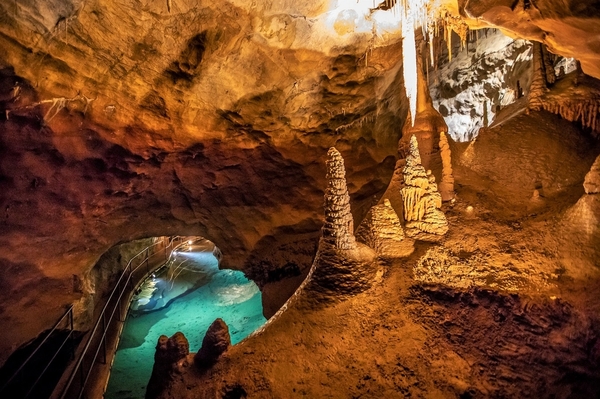
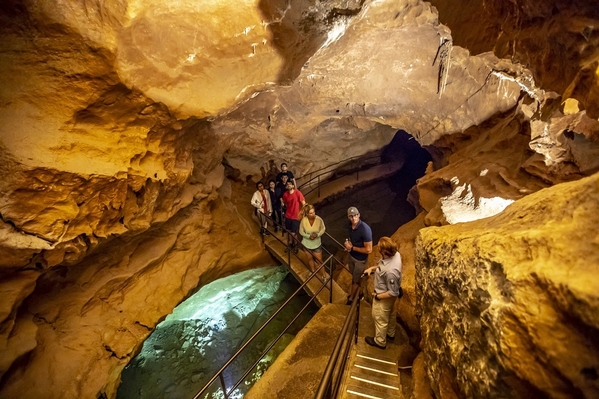
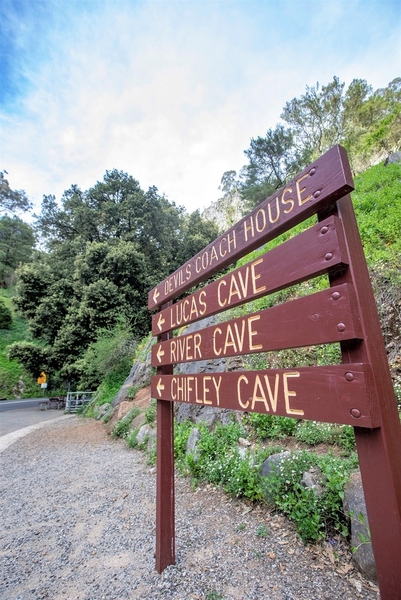
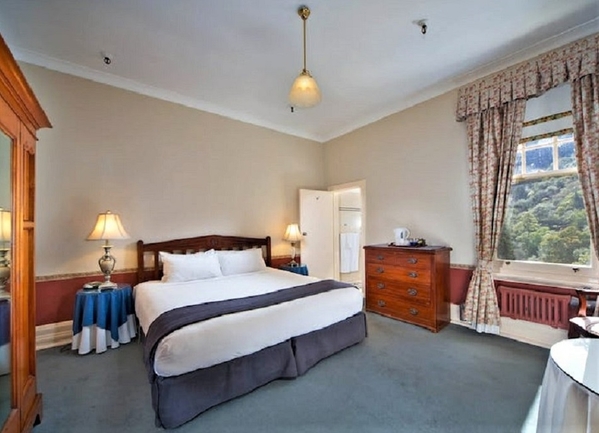

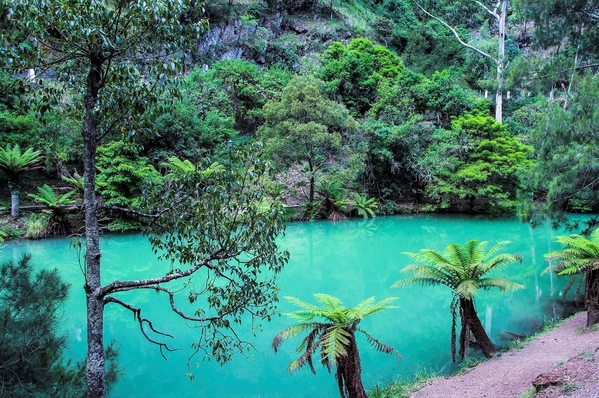
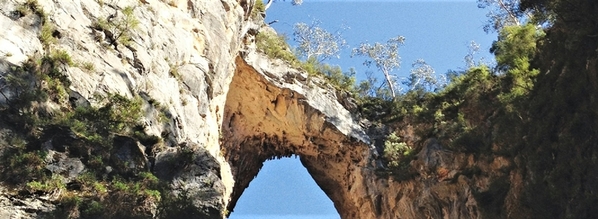

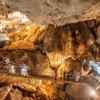



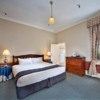
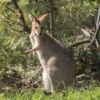


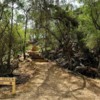
Comments (0)